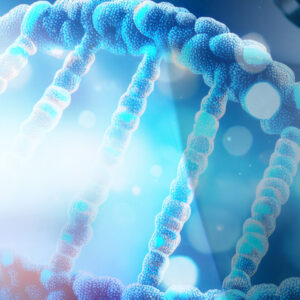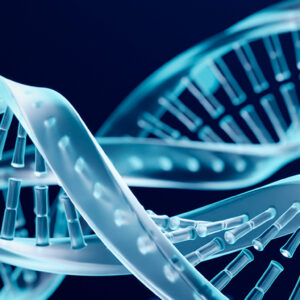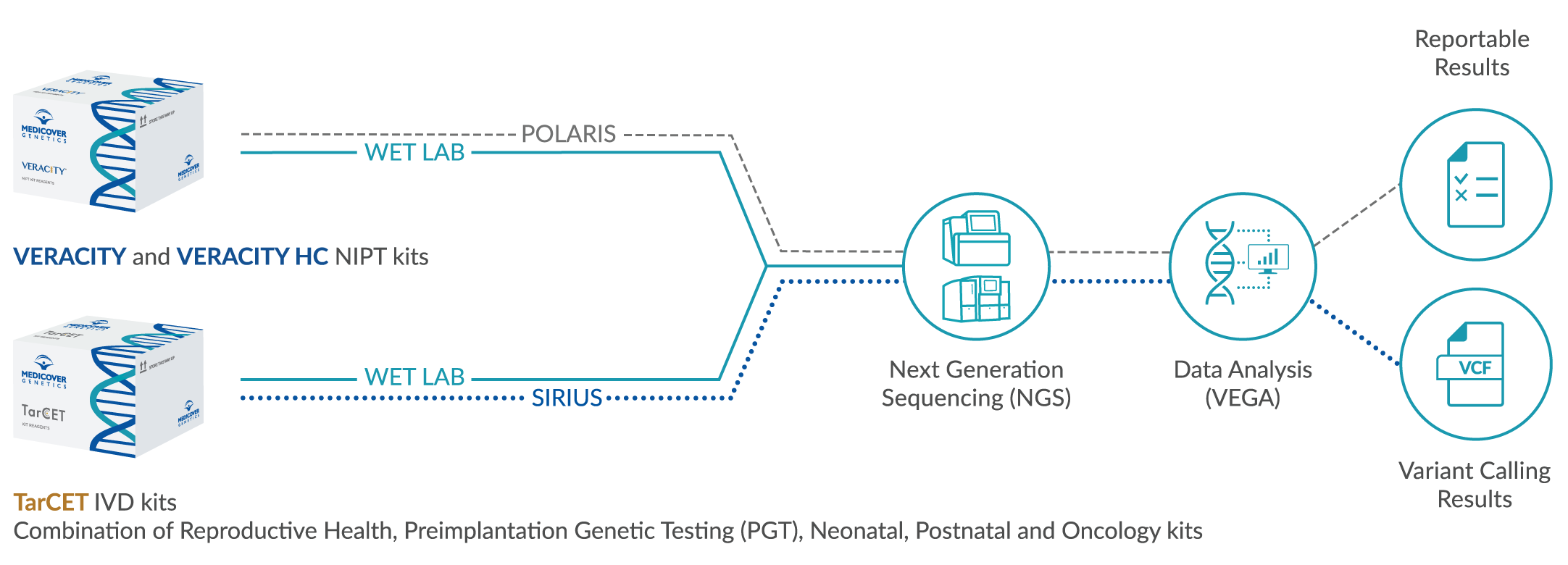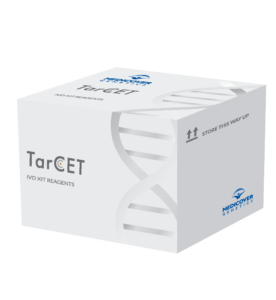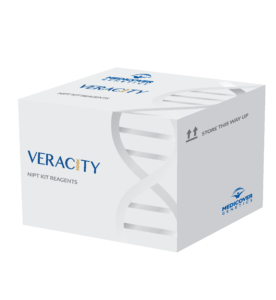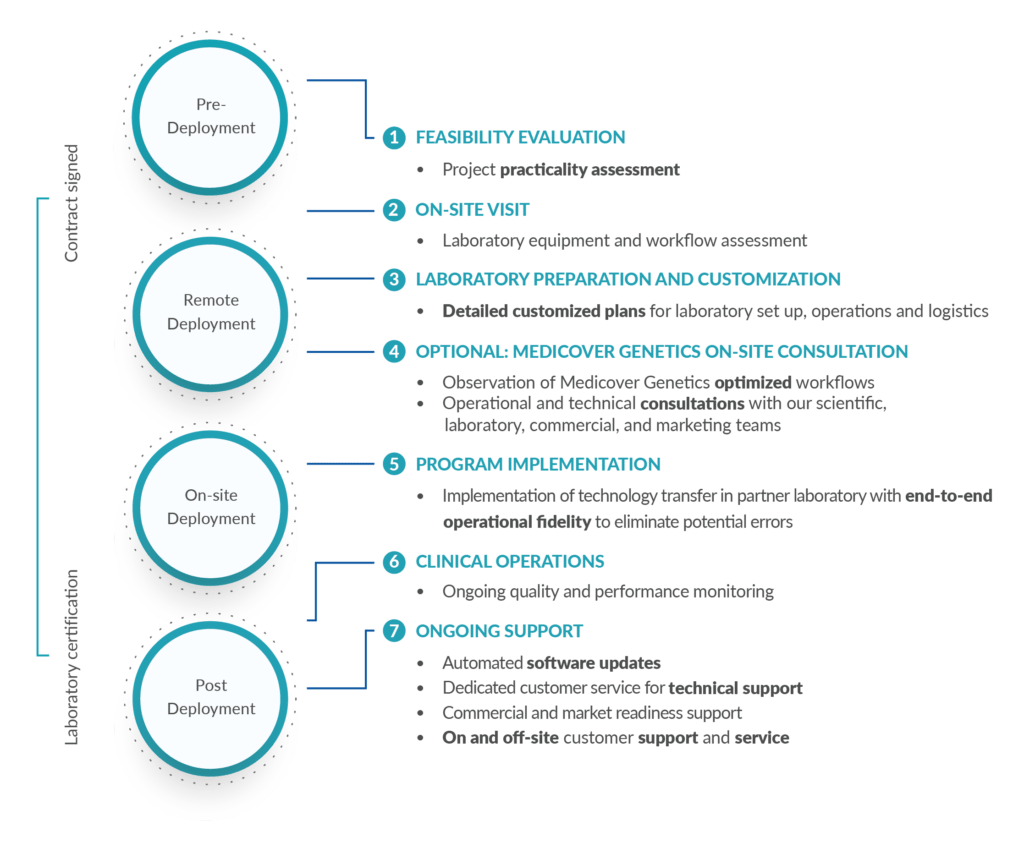Scientific Background
Classic Marfan syndrome (MFS) is the most common connective tissue disorder. It is caused by pathogenic variants in the FBN1 gene, which codes for fibrillin-1. Fibrillin is secreted by fibroblasts and is, together with collagen and elastin, the most important structural component of the extracellular connective tissue matrix. Due to the widespread microfibrillar system in man, pathogenic fibrillin-1 variants can lead to a broad spectrum of clinical manifestations in different organ systems. The clinical symptoms predominantly involve the cardiovascular system, skeleton and the eyes (lens dislocation or ectopia lentis). According to the 2010 revised Ghent Nosology, a diagnosis of Marfan syndrome can be confirmed when isolated aortic root dilatation/dissection is present and a pathogenic variant in the FBN1 gene detected, or when isolated ectopia lentis combined with the detection of a pathogenic variant in the FBN1 gene is described in connection with aortic root dilatation. In contrast, lens luxation with the detection of a pathogenic heterozygous FBN1 variant that is not associated with aortic root dilatation leads to the diagnosis of ectopia lentis syndrome (ECTOL1). Pathogenic FBN1 variants have been described in patients with classic Marfan syndrome, but also in the alternative diagnoses of MASS phenotype (myopia, mitral valve prolapse, borderline aortic root dilatation, striae and skeletal involvement) and mitral valve prolapse syndrome (MVPS). In the presence of aortic root dilatation (z-score >2) and negative FBN1 analysis, examination of the TGFBR1 and TGFBR2 genes is recommended.
The FBN1 gene extends over 230 kilobases of genomic DNA and consists of 66 coding exons. Substitutions of one of the six conserved cysteine residues are the most common amino acid exchanges within the 43 calcium-binding epidermal growth factor (EGF)-like domains. They lead to the loss of a disulfide bridge and thus impair the folding of fibrillin-1. The consequence is reduced incorporation of intact microfibrils into the extracellular matrix due to a dominant negative effect of the altered molecules.
In patients with classic Marfan syndrome, for whom the clinical diagnosis can be made using the 1996 Ghent criteria, pathogenic variants in the FBN1 gene are identified in up to 95% of cases. In 5-25% of patients who show partial symptoms of MFS with additional features (patients with Marfan-like syndrome or incomplete Marfan symptoms) and in whom no pathogenic variant in the FBN1 gene can be detected,variants in the genes for transforming growth factor ß receptors 1 and 2 (TGFBR1 and TGFBR2) have been identified. The mutation detection rate in TGFBR1 and TGFBR2 in thoracic aortic aneurysms and dissections (TAAD) is about 5%.
References
Muiño-Mosquera et al. 2018, Circ Genom Precis Med 11:e002039 / Groth et al. 2017, Genet Med 19:772 / Dietz in Pagon RA, Adam MP, Ardinger HH, et al. (eds). GeneReviews® (Updated 2017 Oct 12) / Verstraeten et al. 2016, Hum Mutat 37:524 / De Backer et al. 2015, Curr Pharm Des 21:4061 / von Kodolitsch et al. 2015, Appl Clin Genet / Loeys et al. 2010, J Med Genet 47:476 / Stheneur et al. 2008, Hum Mutat 29:E284 / Faivre et al. 2007, Am J Hum Genet 81:454 / Collod-Béroud and Boileau 2002, Eur J Hum Genet 10:673













